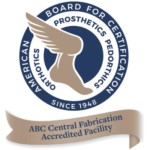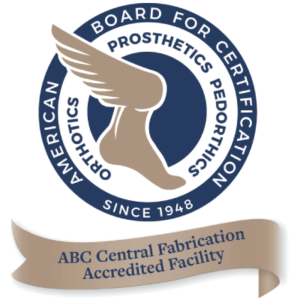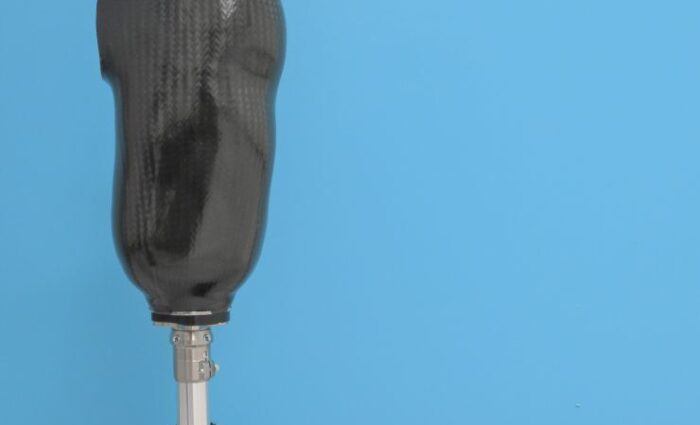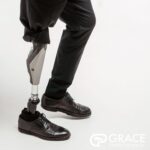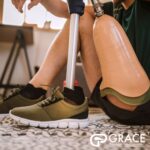How CAD/CAM and Digital Scanning Improve Custom Prosthetic Socket Fabrication
Custom prosthetic socket fabrication has evolved dramatically over the past two decades. With the growing adoption of cutting-edge technologies such as CAD/CAM, 3D scanning, and additive manufacturing, clinicians and prosthetic experts can now deliver more precise, comfortable, and effective socket solutions to patients requiring lower limb prosthetics. Prosthetic leg users often cite socket comfort and fit as the number one factor that influences daily mobility, prosthetic acceptance, and overall satisfaction. Thus, investing in advanced socket design processes is no longer optional—it’s essential.
This guide explores how digital scanning, CAD/CAM processes, and modern manufacturing techniques are transforming the way custom prosthetic sockets are designed and fabricated. Specifically geared towards doctors and specialists working with lower limb amputees, this guide provides an in-depth look into why and how precision in prosthetic leg socket manufacturing translates into better outcomes for prosthetic users.
The Foundation of Lower Limb Prosthetics: Socket Fit and Comfort
In the field of prosthetics, the prosthetic leg socket plays a fundamental role. It is more than just a mechanical interface; it is the crucial link between the user’s residual limb and the prosthetic leg. When improperly fitted, the socket can cause skin abrasions, pressure sores, poor suspension, and long-term discomfort. More importantly, an ill-fitting socket may discourage prosthetic users from wearing their prosthesis altogether.
Custom prosthetic sockets are essential precisely because of the unique anatomical features of each patient’s residual limb. Variables such as limb length, bone shape, muscular atrophy, skin condition, and limb volume fluctuation demand an individualized approach.
This is where contemporary tools like CAD/CAM and digital scanning come into play, offering highly personalized socket design with repeatable accuracy.
Traditional Methods vs. Digital Fabrication Techniques
Conventional Socket Fabrication
Historically, prosthetic sockets were made manually using plaster molds and foam carving. The process typically involved:
- Making a plaster cast of the residual limb.
- Creating a positive model from the cast.
- Manually modifying the mold for fit and alignment.
- Thermoforming the socket over the modified mold.
While skilled prosthetists achieved acceptable results with this method, it was time-consuming and prone to human error. Additionally, storage and duplication of physical models was challenging.
The Move Towards Digital Workflows
Today, CAD/CAM (Computer-Aided Design/Computer-Aided Manufacturing) and 3D scanning provide a faster, more precise, and reproducible method for fabricating custom prosthetic sockets. These newer technologies eliminate many of the inefficiencies in the traditional workflow, enabling practitioners to:
- Digitally model the residual limb.
- Make real-time modifications to the socket design.
- Store patient data and designs for future revisions.
- Manufacture prosthetic leg sockets using CNC milling or 3D printing.
Digital Scanning: The First Step to Precision
The process begins with a digital scan of the residual limb using handheld 3D scanners. These devices capture exact topographical data, down to millimeter-level detail, of the limb. Scanning is contact-free and non-invasive, making it a much more comfortable experience for the patient.
Advantages of digital scanning for lower limb prosthetics include:
- Reduced patient time in the clinic.
- Eliminates messy plaster casting.
- Allows instant data sharing with fabrication labs.
- Enables better documentation and long-term tracking of limb changes.
Digital files can then be imported into CAD software, where the socket design process begins.
CAD: Tailoring Each Socket to the Patient
Once the limb scan is captured, prosthetists use specialized CAD software to design the custom prosthetic socket. Key aspects of socket design include:
- Load path optimization: Ensuring weight is distributed across pressure-tolerant areas.
- Relief for bony prominences: Avoiding discomfort and skin breakdown.
- Suspension mechanisms: Designing for pin-lock, suction, or vacuum systems.
- Anatomical contouring: Custom adaptations for limb volume, shape, and gait alignment.
The digital space allows for precise sculpting of components in ways that traditional plaster modification could not properly replicate.
In cases involving lower limb prosthetics—especially transfemoral (above-knee) and transtibial (below-knee) sockets—socket design must facilitate biomechanics while maintaining comfort. Even subtle adjustments can significantly affect gait and balance.
CAM: Turning Digital Designs into Real-World Custom Prosthetics
After finalizing the socket design in CAD, the design is transferred to a CAM process for manufacturing. This can take two primary forms:
1. CNC Milling
CNC (Computer Numerical Control) milling machines carve out a positive model of the socket using foam or polyurethane blocks. This replica is then used for thermoforming or lamination to form the physical socket.
Benefits:
- High precision output.
- Fast turnaround.
- High scalability for high-volume prosthetic labs.
2. 3D Printing
Additive manufacturing, or 3D printing, builds the socket layer by layer from thermoplastics or composite materials based on the CAD file.
Benefits:
- Zero waste.
- Rapid prototyping and iteration.
- Integration with flexible mesh or lattice designs for ventilation and comfort.
- Lightweight and customizable features embedded into the structure.
This level of customization opens doors to previously impossible prosthetic socket designs, often resulting in improved function and patient satisfaction.
Custom Prosthetic Sockets: Clinical Advantages
Accurate, digitally-fabricated custom prosthetic sockets offer numerous benefits to both clinicians and prosthetic users:
- Improved Fit and Functionality: A perfectly contoured socket reduces pressure points and allows for longer daily use.
- Enhanced Patient Satisfaction: Less adjustment time, fewer visits for refitting, and greater confidence in mobility encourage long-term prosthetic usage.
- Data-Driven Revisions: Digital records enable practitioners to compare limb changes over time and quickly adjust socket designs accordingly.
- Faster Delivery Times: Modern workflows shorten the window from evaluation to final delivery, getting people back on their feet sooner.
- Remote Collaboration: Clinicians can work with distant fabrication labs by simply sending digital files, removing geographical barriers and increasing quality control.
Case Applications in Lower Limb Prosthetics
Digital socket fabrication is particularly useful in complex or high-activity cases such as:
- Pediatric Amputees: Regular growth and limb changes require easily repeatable, scalable socket fabrication.
- Athletes & High-Activity Users: Custom prosthetic sockets with performance-oriented contours and shock-absorbing structures help withstand dynamic stress.
- Geriatric Patients: Age-related skin issues and bone fragility benefit from pressure-sensitive socket designs enabled by digital sculpting.
- Diabetic Patients: Eliminating pressure ulcers is critical; precise load redistribution is a hallmark of digitally fabricated sockets.
By eliminating much of the guesswork, clinicians can provide custom prosthetics that genuinely improve lives.
The Future of Prosthetic Leg Sockets
The integration of emerging technologies like AI-enhanced gait analysis, motion sensors, and smart materials will continue to push the limits of prosthetic leg socket design.
Looking forward, these advancements are expected to:
- Enable real-time socket adjustments through embedded sensors.
- Customize socket elasticity to accommodate daily limb volume fluctuations.
- Use cloud-based CAD storage for centralized patient records and models.
As prosthetic users grow more tech-savvy and demand higher function and comfort, embracing the digital future of socket fabrication becomes not merely an option, but a necessity.
Considerations for Doctors and Rehabilitation Specialists
Physicians and specialists play a pivotal role in ensuring successful prosthetic outcomes. Here’s how you can integrate modern socket fabrication into your clinical pathways:
- Prescribe Custom Prosthetic Sockets Early: The success of rehabilitation significantly hinges on socket comfort and fit.
- Collaborate with Modern Fabrication Labs: Work with partners who use digital scanning and CAD/CAM methods for improved timelines and patient satisfaction.
- Educate Patients: Help prosthetic users understand the benefits of custom-fabricated sockets so they can make informed decisions.
- Monitor Residual Limb Changes: Coordinate periodic re-scanning to adjust sockets as needed, especially for new amputees or patients with fluctuating limb volume.
Choose Grace Prosthetic Fabrication for Custom Prosthetic Socket Fabrication
The journey from limb loss to regaining mobility is a deeply personal one. For doctors and prosthetic specialists, ensuring that each step is supported by a well-fitted, custom prosthetic socket is a critical measure of care quality. Thanks to innovations in CAD/CAM, digital scanning, and 3D printing, today’s custom prosthetic sockets are more precise, comfortable, and reliable than ever before.
Partnering with an experienced fabrication provider who embraces these technologies can elevate both patient outcomes and clinical workflow.
Contact Our Prosthetic Fabrication Team Today

